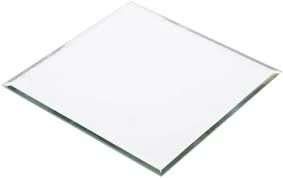

Understanding the Cost of Tinted Glass Factors and Considerations
Tinted glass has gained significant popularity in recent years due to its aesthetic appeal and functional benefits. From residential homes to commercial buildings and vehicles, tinted glass serves multiple purposes, including enhancing privacy, reducing glare, and improving energy efficiency. However, when considering tinted glass for your specific needs, understanding the associated costs is essential. This article explores the various factors that contribute to the overall cost of tinted glass and provides insights for consumers looking to make informed decisions.
1. Types of Tinted Glass
The first aspect influencing the cost of tinted glass is the variety available on the market. Tinted glass can come in several forms, such as laminated, tempered, or insulated glass. Each type has its own unique characteristics and benefits. For instance, tempered glass is treated to withstand high levels of stress and impact, making it a safer choice for certain applications. Laminated glass, which consists of multiple layers of glass with a special interlayer, offers enhanced security and sound insulation. The choice of glass type will significantly impact the overall cost, with specialized treatments and manufacturing processes often leading to higher prices.
2. Tinting Options and Techniques
The method of tinting also plays a crucial role in determining the cost. There are several ways to tint glass, including using pre-tinted glass, applying a film, or utilizing sprayed-on tints. Pre-tinted glass is manufactured with the tint integrated into the glass during production, typically offering a more durable solution. On the other hand, tint films can be applied after the glass has been produced, providing flexibility in tint intensity and color. Spray-on options may be more cost-effective but might not offer the same level of durability or consistency as pre-tinted glass. Each of these methods comes with its own price range, so consumers must weigh the options based on both durability and budget constraints.
3. Size and Design

The size and design of the glass panes are important factors influencing cost. Larger panes of tinted glass generally cost more due to the amount of materials used and the complexity of installation. Additionally, custom shapes or designs will further increase the price, as they often require specialized manufacturing techniques. When budgeting for tinted glass installations, it’s crucial to measure the exact dimensions and consider the complexity of the design to avoid unexpected costs.
4. Application and Location
Where and how you intend to use tinted glass can also affect the overall cost. For example, commercial installations may require more extensive or specialized glass options to meet building codes and regulations. Likewise, residential applications may come with different material standards and installation requirements, leading to price variations. Geographic location impacts cost as well; in regions with a higher cost of living, labor and materials may be more expensive, leading to higher overall costs for tinted glass installations.
5. Professional Installation vs. DIY
Deciding between professional installation and a DIY approach is another major factor in the final cost. Hiring professionals to install tinted glass can ensure a high-quality finish and may come with warranties or guarantees. However, this will add additional labor costs to the project. On the other hand, a DIY installation might save money, but it requires a level of skill and expertise to achieve a seamless result. Potential mistakes in the installation could lead to further expenses if adjustments or replacements are needed.
Conclusion
The cost of tinted glass can vary widely based on several factors, including the type of glass, tinting method, size, application, and installation choice. Understanding these variables can help consumers make informed decisions that align with their budget and needs. Whether for enhancing the aesthetic appeal of a building, improving energy efficiency, or increasing privacy and security, tinted glass offers a multitude of benefits worth considering. By thoroughly researching and planning, you can successfully incorporate tinted glass into your project while ensuring you stay within your financial parameters.